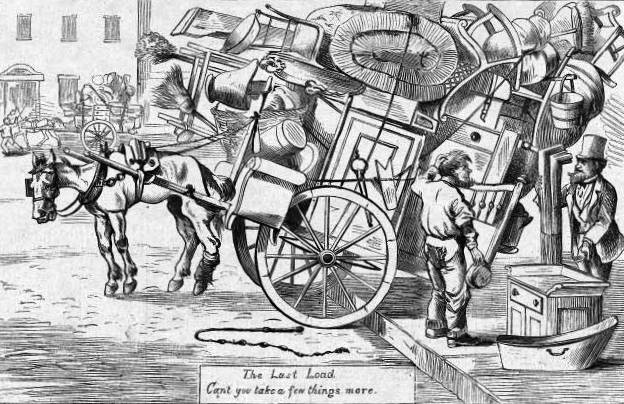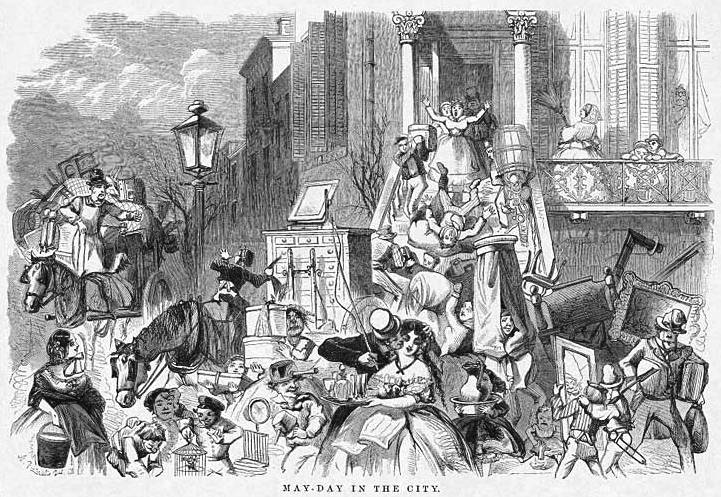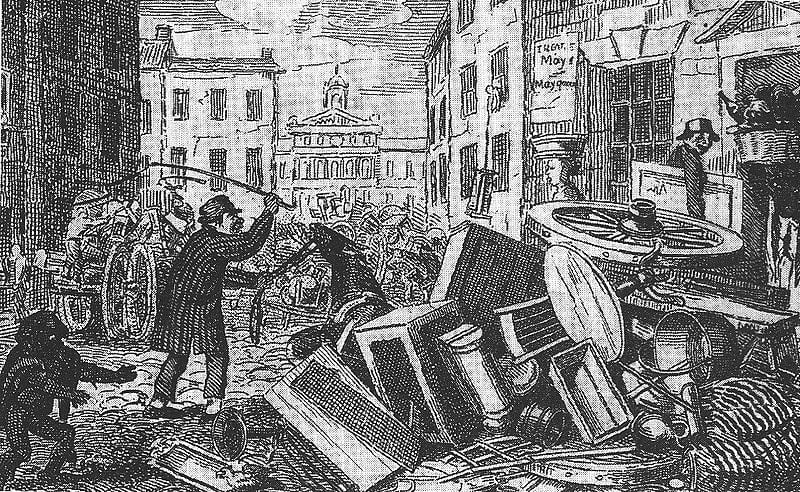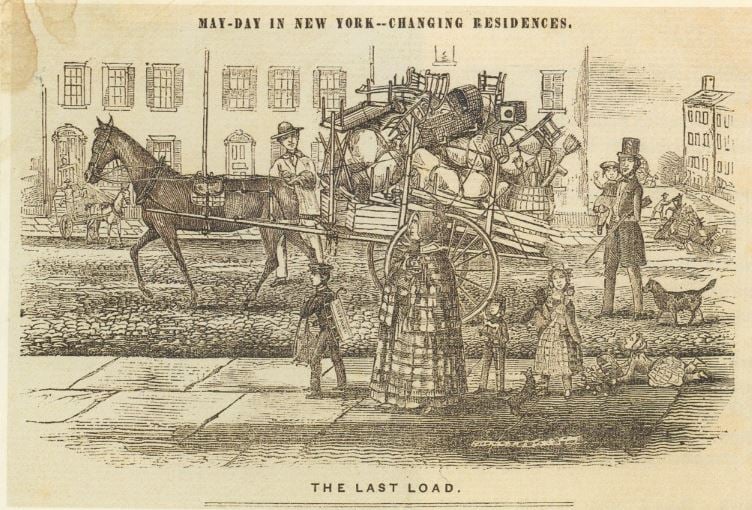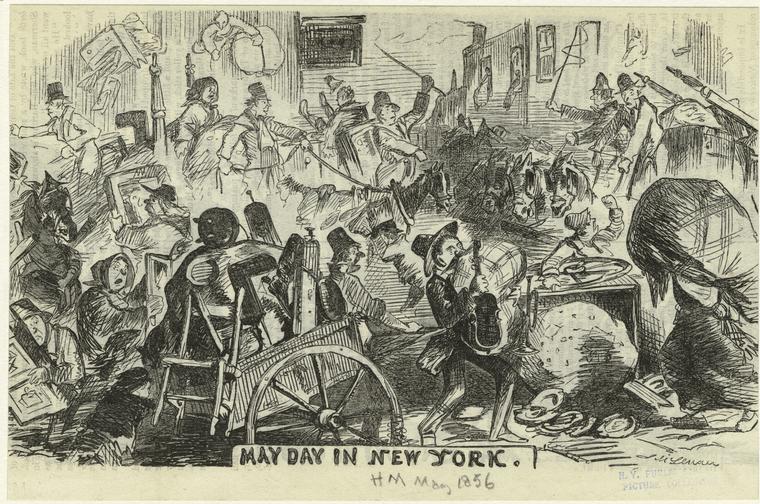Blog Archive
First Months Rent Free, But No Security
New Yorkers love talking real estate – this might be the only place on earth where it’s not only polite, but practically required to ask all your friends what they pay for their apartments. Every renter has their own idea of how to best secure their dream abode – some prefer to move in late summer or early fall, when more apartments are available, but more people are looking, so the pressure is on and rents can be high, while some like a leisurely move in the winter months when fewer people are looking for apartments, but fewer are available.
This decision was easy to make for much of the 19th century, because May 1st was Moving Day for nearly all New Yorkers. February 1st was known as “Rent Day,” when landlords would give their tenants notice of what the rent of the apartment would be in the spring. In the months between February and May, New Yorkers would look for new, cheaper dwellings. At 9 a.m. on May 1st, all yearly leases expired simultaneously, sending hundreds of thousands of tenants spewing into the streets, all over the city, in search of cheaper rents and more commodious dwellings.
Business came to a halt as legions of New Yorkers emptied into the streets with carts jammed full of their worldly possessions. Because there weren’t enough carts and horse-taxis to handle the demand, farmers from Long Island and New Jersey would come into Manhattan and rent their transportation at exorbitant prices – sometimes more than a week’s wages for the person moving! Fights with these rented cartmen occurred often; sometimes the cartman would drive a family’s possessions right to a police precinct to settle the quarrel over payment there.
In what observers remarked was an unrivaled scene of chaos and disorder, liquor flowed freely, streets and sidewalks became impassible, and tensions rose to the point of an occasional brawl. The New York Times offered some advice in 1855, “Keep your tempers, good people. Don’t growl at the carmen nor haggle over the price charged. When the scratched furniture comes in don’t believe it is utterly ruined, – a few nails, a little glue, a piece of putty, and a pint of varnish will rejuvenate many articles that will grow very old ‘twixt morning and night, and undo much of the mischief that comes of moving, and which at first sight seems irreparable.”
Because the whole city was moving at the same time, landlords needed to provide incentives for new tenants to choose their buildings; the conditions of the privvys (outhouses), the number of windows, and more could be the deciding factor of one building over another. Many landlords even offered the first month free of charge! However, the annual practice of moving on May 1st also allowed landlords to set rents at whatever price the market could bear.
New York’s immigrant residents likewise took the opportunity May 1st offered to look for better accommodations. When the Irish immigrant Moore family moved into 97 Orchard Street in 1869, it was their third home in four years. But they weren’t there for long; the Moores were on the move again in 1870, this time to 224 Elizabeth Street.
Moving Day hit its peak in the early 20th century, when it is estimated that over a million people looked for new living quarters on the same day! It wasn’t until the Second World War that Moving Day finally came to an end, when moving companies had a difficult time finding able-bodied men to work for them, and the custom faded away. The death knell for Moving Day was the beginning of rent control and a housing shortage in the 1940’s.
Of course, there was one upside to Moving Day – the rush for all tenants to move out in one day in May caused a greater ease of apartment-hunting for those who wished to move in the winter months.
– Posted by Lib Tietjen
